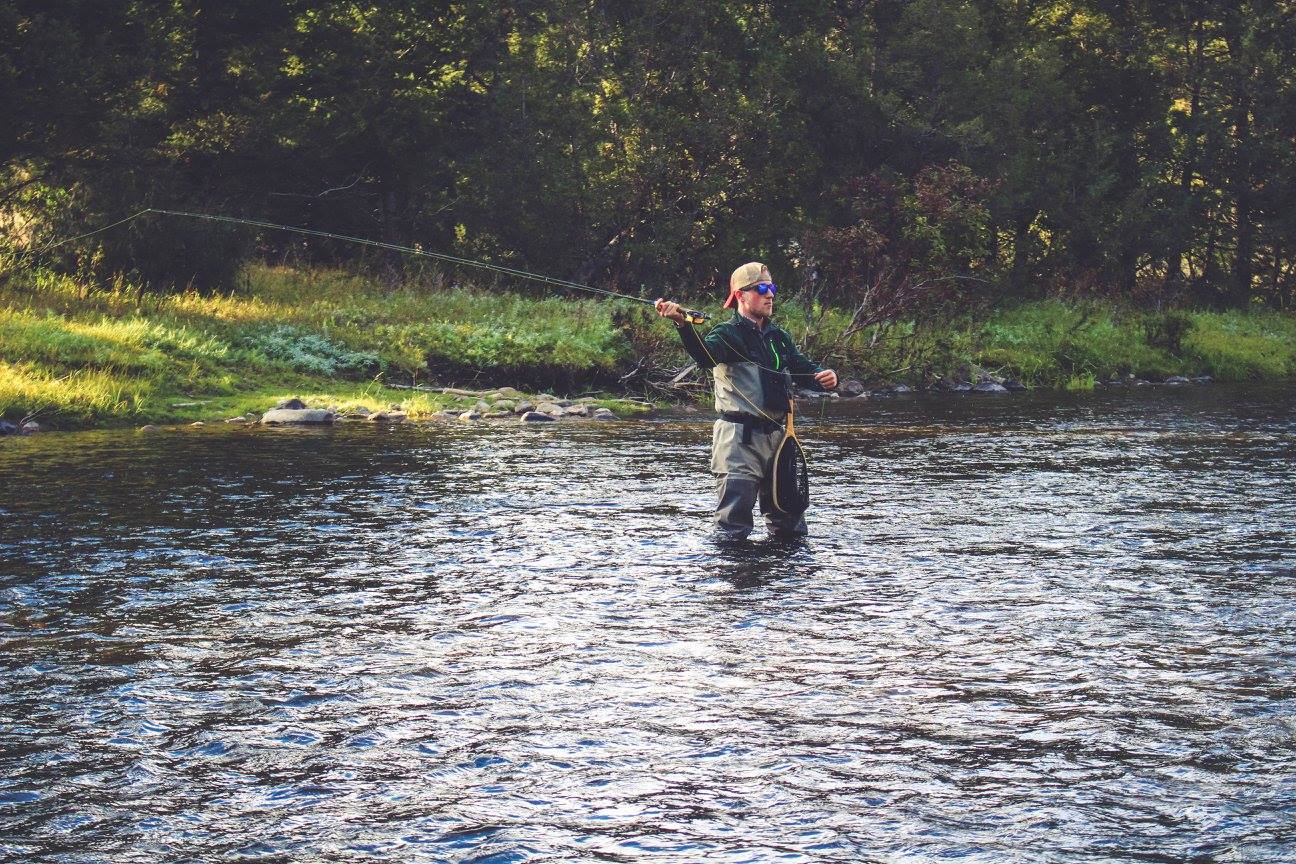Spring has arrived and that means all the underwater insect life is starting to wake up from their winter slumber and move around getting ready for the right conditions to hatch. And many states opening trout days are just around the corner. Now is one of the best times to get trout on nymphs as they start to warm up and begin to feed aggressively. We’ve gathered a few of our favorite spring patterns, whether you already fish them or they’re new to your fly box, tie one of these things on and get after your big trout of the season!
#1 – The Emerald Caddis
 Springtime is caddis time around most of our trout streams as these nymphs start to make their way out of their casings and begin to move around the water column. Fish this nymph low and slow, and have it tumble along the bottom, like a nymph that just got washed off their holding spot. During spring we almost always have at least one of our flies showing a chartreuse segment as it seems to be a trigger pattern for many fish and will at the very least bring an interested fish over to see what that tasty snack floating by is.
Springtime is caddis time around most of our trout streams as these nymphs start to make their way out of their casings and begin to move around the water column. Fish this nymph low and slow, and have it tumble along the bottom, like a nymph that just got washed off their holding spot. During spring we almost always have at least one of our flies showing a chartreuse segment as it seems to be a trigger pattern for many fish and will at the very least bring an interested fish over to see what that tasty snack floating by is.
#2 – Soft Hackle Hare’s Ear
No trout are safe from the hare’s ear, perfectly mimicking pretty much any natural nymph in the water column, this fly should be a go-to all spring and summer when you are trying to first figure out what the fish are eating. Add this to any one of your nymph rigs for an easy confidence pattern that is sure to entice a strike…or several.
#3 – Green Drake Emerger
Not all nymphs need to be rolling along the bottom to hook fish. This emerger is a deadly addition to a double fly euro-nymphing rig as the top fly that will sit suspended in the water column. Most fish will clobber this fly on the swing and dead drift, they can’t get enough!

#4 – Holo Zebra Midge
The absolute workhorse of this collection is this simple zebra midge with a white wing, the sparse deer hair traps a tiny air bubble that is a trigger for trout, as midges release a small bubble to float them to the surface to hatch. This is another great pattern to throw if you are in a technical creek with spooky trout. This also simulates the little black stoneflies that will be coming off pretty much every warm afternoon from now until the first freezes of winter.
#5 – Glistening Caddis
This is the lightweight champion of caddis flies, this unweighted pattern is tied with buggy dubbing that gives it a broken up profile of an uncased caddis floating in the water column about to hatch. I like to add this fly behind a dry fly in foam lines, or as the top fly in a euro-nymphing rig. As the late, great, Lefty Kreh always said: “If it ain’t chartreuse, it ain’t no use!”
Want killer flies like these delivered every month? Join the Postfly Tribe today and flies and killer accessories every month!
https://postflybox.com/blog/2019/04/01/how-to-find-your-confidence-fly-patterns/
https://postflybox.com/blog/2019/03/27/how-to-use-tippet-rings/
https://postflybox.com/blog/2019/03/25/how-to-find-early-spring-smallmouth/

Dan Zazworsky’s passion is sharing his love of fly fishing with anyone that will listen, read or watch. You can find him exploring new waters every day while chasing any fish that will eat a fly!










I am relatively new to fly fishing and I have been learni g tight lining, and I really like it. I’m finding the more people I ask questions to I get so many different answers. Like should I get a 10ft 3 at rod, some people say no and some say yes. Also just getting the right flies to use. I would appreciate some info and help. I am currently using a 9 ft rod for both nymphing and dry. I consider myself a better nymph Fisher though.
If you want to tight line anything over 10ft should be in your hand. Study different sighted/leader configurations. Tight line has its limits so be prepared to switch to a suspender. 3 wt reduces fatigue. Learn the technique before stressing over fly selection. These will depend on water flow and condition. 2 flies a dropper and and an anchor. Vary junk and traditional nymphs